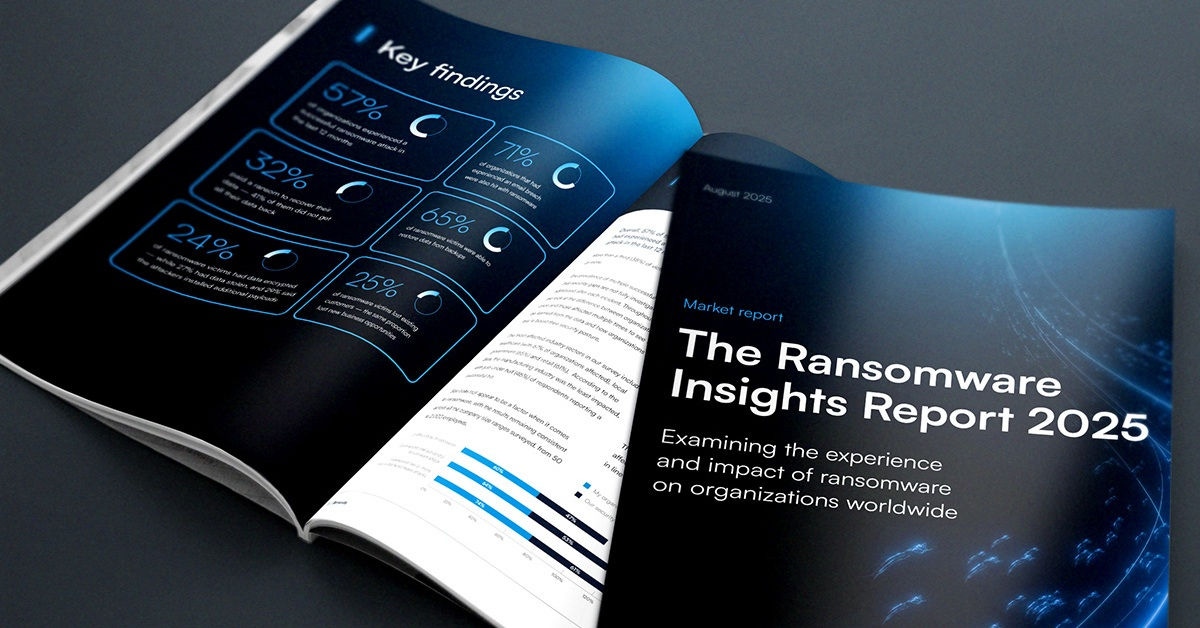
Los cambios del NCSC del Reino Unido destacan la necesidad de herramientas que interpreten los datos de DMARC.
Los dominios de correo electrónico son un objetivo popular para los ciberatacantes, que los utilizan para crear mensajes que parecen provenir de una organización legítima y confiable, pero que de hecho están diseñados para ataques de phishing, robo financiero o para propagar malware o spam.
Esta táctica de ataque, conocida como suplantación de dominio, representa una amenaza significativa para las organizaciones en todas partes, no solo en términos de posible fraude, pérdida monetaria y de datos, sino en términos de daño a la confianza del cliente y a la reputación de la marca.
El propósito principal de DMARC es prevenir esto.
DMARC — o para darle su nombre completo, autenticación, informes y conformidad de mensajes basados en dominios — es un protocolo de autenticación de correo electrónico que permite a los propietarios de dominios de correo proteger su dominio del uso no autorizado.
Los informes generados por implementaciones de DMARC son inmensamente valiosos para las organizaciones que buscan una supervisión precisa y continua de su seguridad de correo electrónico en un panorama de ciberamenazas en constante evolución.
En el Reino Unido, las organizaciones del sector público han podido utilizar una herramienta gratuita Mail Check proporcionada por el Centro Nacional de Seguridad Cibernética (NCSC) para identificar, comprender y prevenir el abuso de sus dominios de correo electrónico.
Sin embargo, a partir del 24 de marzo de 2025, el servicio de Mail Check ya no incluirá informes agregados de DMARC. El NCSC está alentando activamente a las organizaciones a que hagan la transición a herramientas alternativas de DMARC para mantener la visibilidad y el control de sus dominios de internet.
El desafío de los informes agregados de DMARC
DMARC envía un registro a los servidores de correo electrónico receptores informándoles si los correos electrónicos pasaron o fallaron DMARC y otras verificaciones de seguridad de correo electrónico. También proporciona detalles de las direcciones IP y dominios que enviaron correos electrónicos en nombre del dominio de la organización, y el número de correos electrónicos enviados desde cada fuente.
DMARC recopila toda esta información en informes agregados para el equipo de TI, detallando cómo los servidores de correo electrónico receptores han manejado los correos electrónicos del dominio de la empresa.
Estos informes son importantes. Informan a los propietarios de dominios sobre fallos de autenticación, intentos de abuso, tráfico de correo electrónico y problemas de configuración, y ayudan a fortalecer la seguridad general del correo electrónico asegurando que solo se envíen correos legítimos desde el dominio de la organización.
Sin embargo, estos informes también pueden ser densos y detallados. Muchas organizaciones recurren a herramientas de terceros para ayudarles a interpretar estos informes.
Cómo puede ayudar Barracuda
Protección contra Fraude de Dominio de Barracuda proporciona una visibilidad y un análisis profundos de la implementación DMARC de una organización. Cuenta con automatización y una interfaz fácil de usar, y ayuda a las organizaciones a reducir el riesgo, proteger el correo electrónico legítimo y prevenir la suplantación de identidad.
También ayuda a las organizaciones a extraer el valor completo y la información de los informes DMARC.
Los informes DMARC se recopilan, analizan y visualizan automáticamente. Esto proporciona a los clientes información de alto nivel sobre los diferentes sistemas de correo electrónico que envían correos con sus dominios y les permite acceder a información detallada, incluyendo qué IPs están pasando y fallando DMARC, desalineación de dominio y ejemplos de suplantación.
Barracuda Domain Fraud Protection está disponible como parte de la completa plataforma Barracuda Email Protection. Los informes DMARC están completamente integrados en todos los planes de Barracuda Email Protection, pero también se pueden adquirir como un servicio independiente.
Para hablar con un experto sobre el soporte de Barracuda para la generación de informes DMARC integrados o independientes, por favor contáctenos hoy.

Informe de Barracuda sobre Ransomware 2025
Principales conclusiones sobre la experiencia y el impacto del ransomware en las organizaciones de todo el mundo
Suscríbase al blog de Barracuda.
Regístrese para recibir Threat Spotlight, comentarios de la industria y más.

Seguridad de vulnerabilidades gestionada: corrección más rápida, menos riesgos, cumplimiento normativo más fácil
Descubra lo fácil que es encontrar las vulnerabilidades que los ciberdelincuentes quieren explotar.





